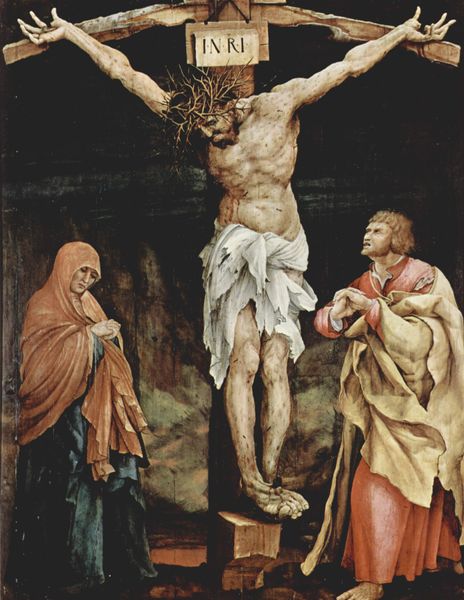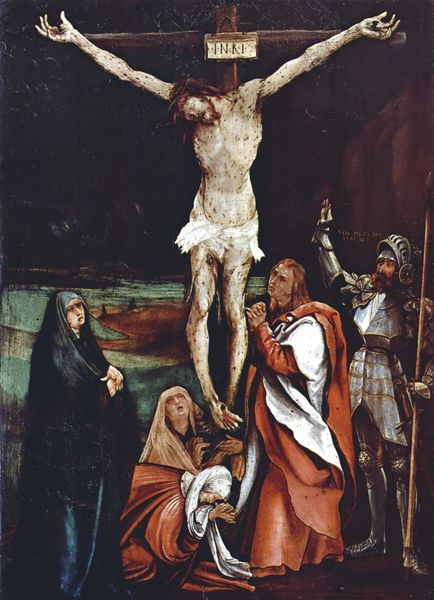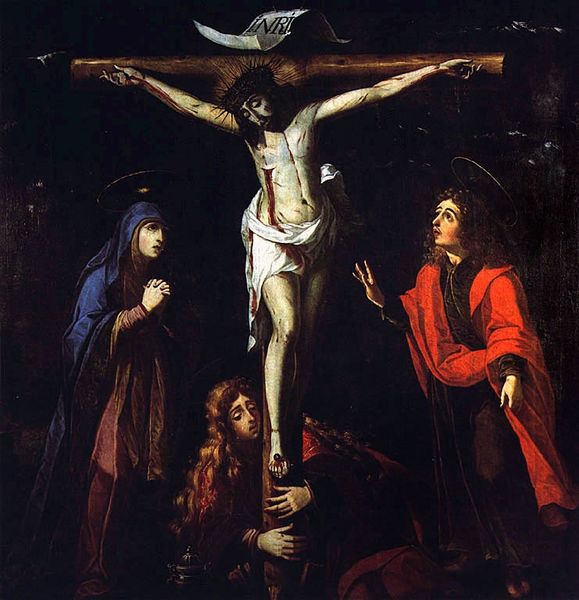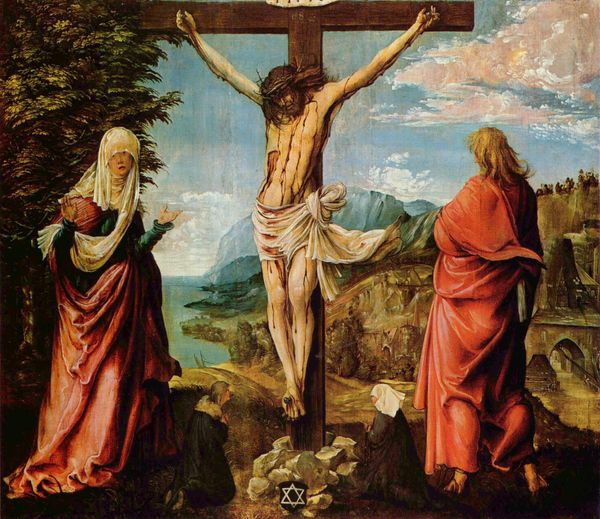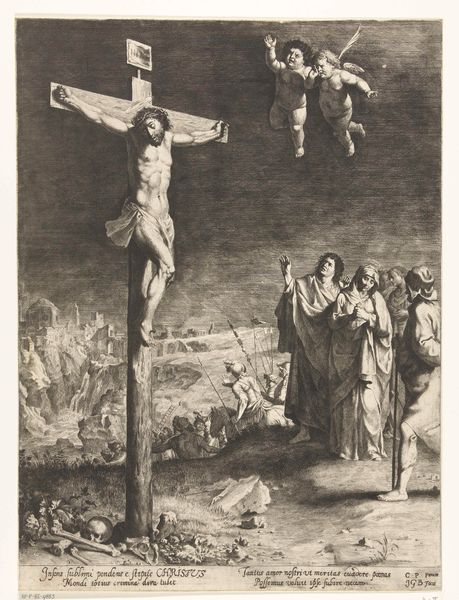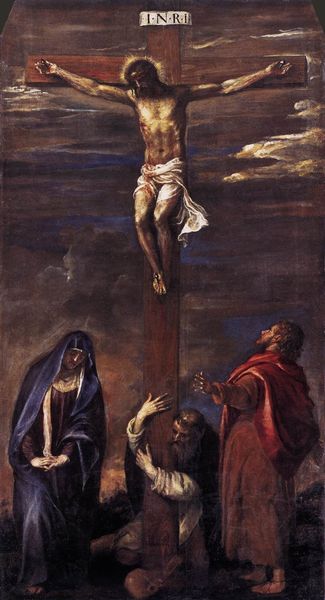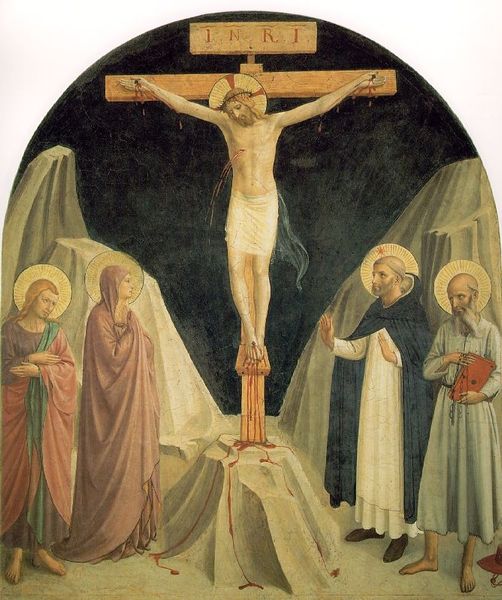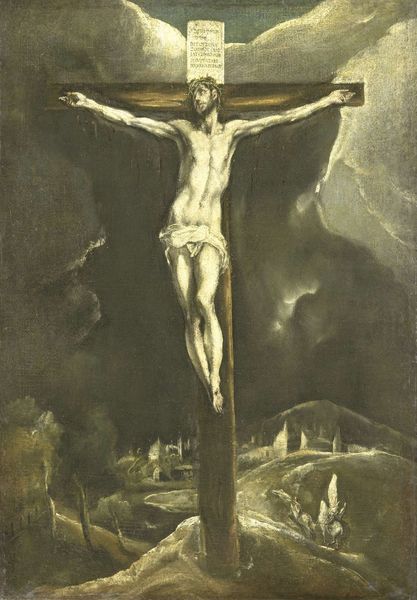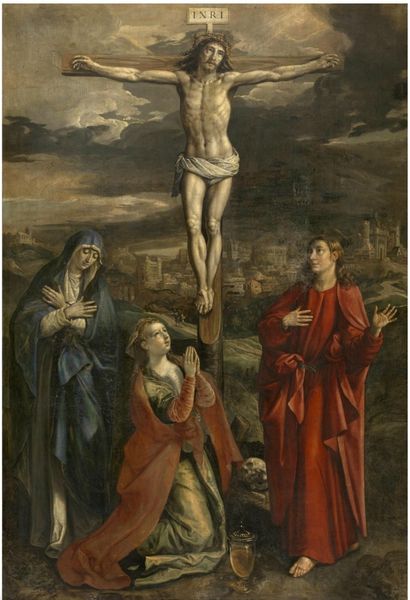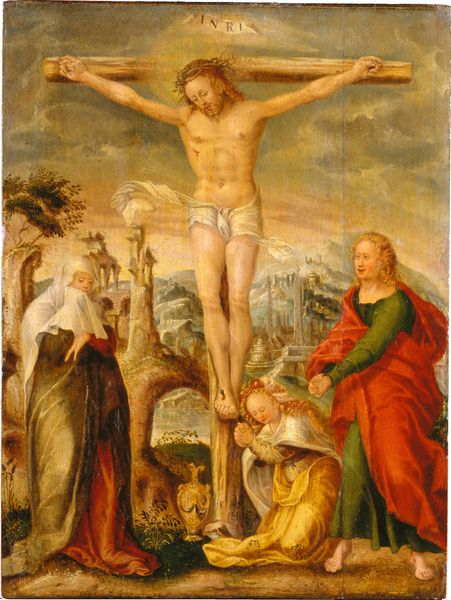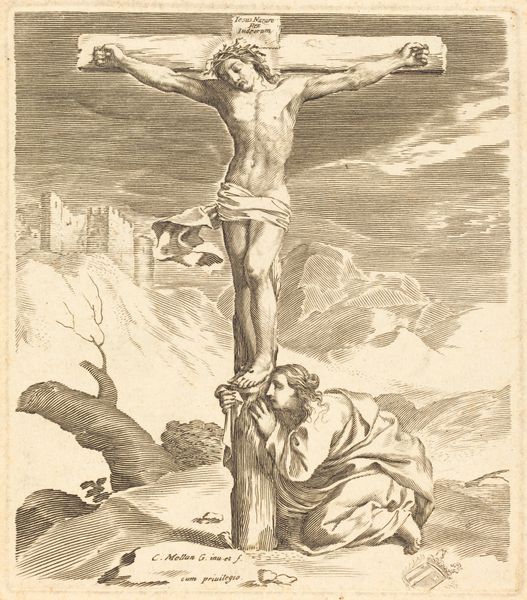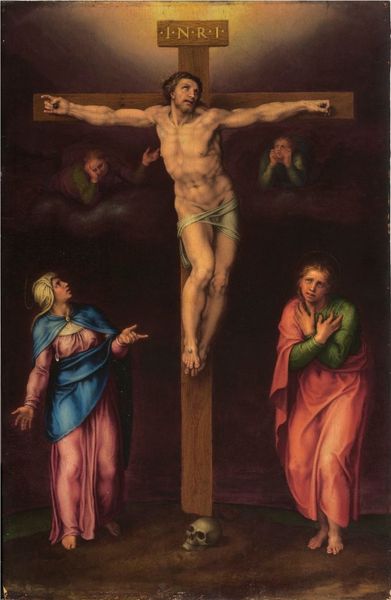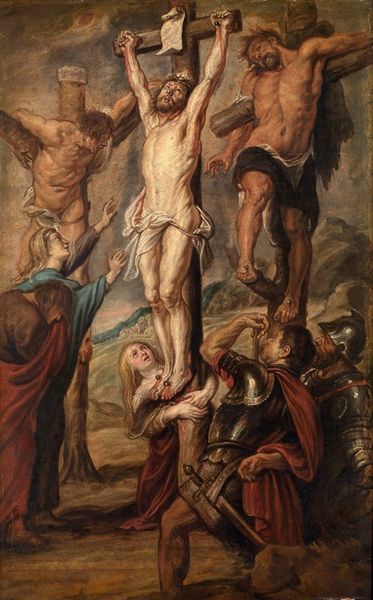
painting, oil-paint, fresco
#
painting
#
oil-paint
#
figuration
#
fresco
#
oil painting
#
jesus-christ
#
neo expressionist
#
underpainting
#
christianity
#
men
#
painting painterly
#
crucifixion
#
history-painting
#
northern-renaissance
Dimensions: 61.6 x 46 cm
Copyright: Public domain
Curator: Let’s spend some time reflecting on Matthias Grünewald's "The Small Crucifixion" from around 1510, currently residing at the National Gallery of Art. The oil-paint work depicts a harrowing vision. What springs to mind for you upon seeing it? Editor: The raw emotional intensity hits me immediately. There's a sense of profound suffering but rendered with this strange, almost otherworldly light. It feels... visceral, doesn’t it? The artist doesn't shy away from portraying the brutal reality. Curator: Precisely. Grünewald masterfully uses the principles of Northern Renaissance art to enhance the tragedy of the subject matter. Note how the distorted body of Christ and the exaggerated expressions of the figures around the cross aren't just stylistic choices, but rather powerful visual tools. The high-contrast areas intensify emotional appeal while retaining balance throughout the picture plane. Editor: It's as though the composition itself is fracturing. The darkness seems to be pressing in. The angular poses – everything from the sharp points of the crown of thorns to the pleading, angular gestures of those around the cross – contributes to this feeling. It gives off feelings of utter abandonment. It asks whether compassion exists. Curator: Compassion and questioning is key to appreciating this painting. One might see it as an embodiment of personal anguish and spiritual striving rendered in art history. You might even sense an undercurrent of rebellion towards religious traditions that may not appeal to common sentiments of suffering. Grünewald almost seems to emphasize the human cost of religious belief. Editor: He captures what could have been with poignant humanity – no matter how terrible the occasion was at its core – this painting evokes the humanity involved, something all can recognize even after so long, from an intensely different perspective of time. Looking back, it offers new insight of appreciation towards old struggles with death that never seem to cease reminding people. Curator: It's a powerful interpretation, reflecting the ongoing dialogue between art, faith, and the human experience. I leave our listeners with something to ponder that you put forward so elegantly just now – what does Grünewald teach all of us? Editor: It's all too much that words can barely touch on a personal understanding without giving a try yourselves. This is precisely where great art works magic.
Comments
No comments
Be the first to comment and join the conversation on the ultimate creative platform.
